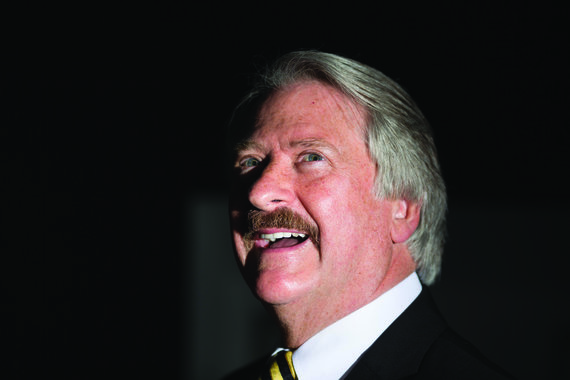_______________________________________
I WAS SITTING THERE in one of the Wine & Spirit Education Trust lecture rooms at Five Kings House, London, awaiting the next lecture. Like just about all of my fellow Diploma students, I was thinking: “Oh, no it’s spirits. Boring, not interested.” The next thing I knew, we were all being showered with grains of barley. Richard Paterson of Whyte & Mackay was the lecturer.
Many have stories of their first encounter with Paterson. That was mine. His was, far and away, the best lecture of the course.
There are many characters in the scotch whisky industry and Paterson is certainly one of them – some may say a larger than life figure. Continually travelling, always immaculately turned out, usually in an elegant dark suit with a handkerchief in the top pocket to match the silk tie, he is unfailingly polite – unless provoked or wronged.
Despite having children and grandchildren, a chance remark suggests one thing that certainly riles him. Paterson obviously hates out-of-control, howling, screaming children on long-haul flights. Decency prevents me repeating what he would do to them. It probably all goes back to the slap on the back of the head by his father, who had taken over the WR Paterson blending and bottling business from grandfather William Robertson Paterson.
Paterson junior and his twin Russell were being taken to the company warehouse for their first indoctrination into the world of scotch whisky. The eight-year-old was dilatory in relating to his father what he was smelling. Hence the whack.
HEIGHTENED SENSES
He was then able to smell a sweetness and a certain heaviness. His father pressed him to stipulate what fruit: peaches or grapes and the heaviness, “heavy in body and as fleshy and weighty as your grumpy grandfather?” And so Paterson’s journey started.
That was 1956. Ten years later, at his father’s behest, he started at A Gillies & Co, whisky blenders and brokers, as a general production assistant. He was there for four years.
In 1970 he joined Whyte & Mackay and, within five years, he was master blender at the tender age of 26 – believed to be Scotland’s youngest master blender, at the time.
Paterson later developed his own jaunty, less painful way of nosing, tasting and appreciating scotch whisky. It is like meeting an old friend. From the WSET lecture it goes something like this: “As you put the glass to your nose, you say: ‘Hello, how are?’ As you nose the glass, as you take a dram and hold it in your mouth: ‘I am very well, thank you.’ Sloshing the liquid over your palate to release the flavours.”
As with most master distillers and blenders, Paterson is blessed with a remarkable memory. He can rattle off dates and easily remembers fine details about people he meets and engages.




